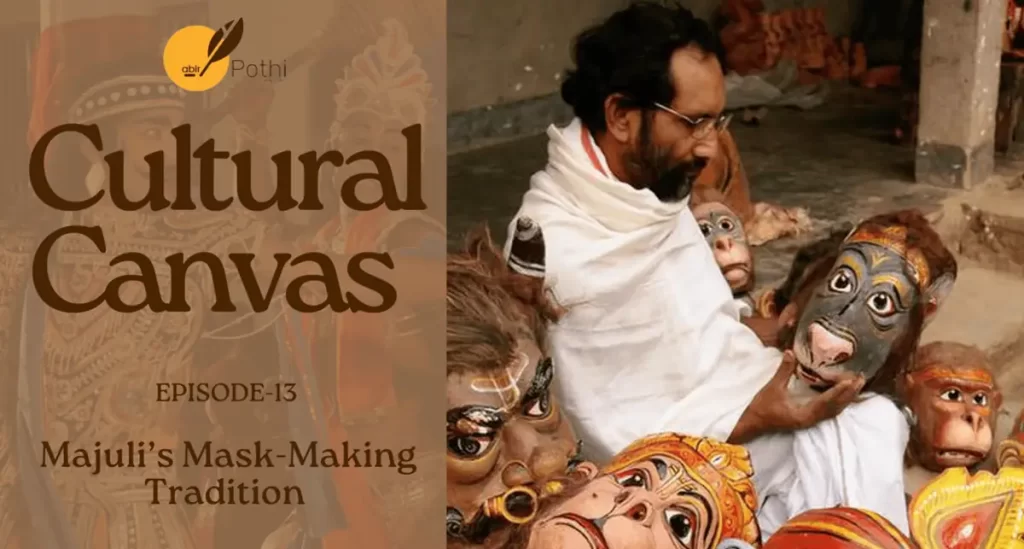Majuli, an island in Assam, is known as the world’s largest river island and holds a rich cultural heritage. Among its many traditions, mask-making stands out as a significant art form. These masks are not just artifacts but an integral part of the island’s spiritual, theatrical, and cultural practices, rooted in its Neo-Vaishnavite background.
The tradition of mask-making in Majuli dates back to the 16th century and is closely tied to Srimanta Sankardev, a scholar and saint who led the Neo-Vaishnavite movement in Assam. Sankardev established sattras, or monastic hubs, which became centers for religious and cultural reform. Masks played a key role in Bhaona, a form of theater Sankardev developed to share spiritual teachings. His first play, Cihna Yatra, performed in 1468, used masks to tell stories from Hindu mythology, a practice that has since become deeply embedded in the culture of Majuli.
These masks are central to performances such as Bhaona and Raas Leela, where actors use them to represent characters from Hindu epics, including deities, demons, and animals. Through these performances, the masks connect audiences to the stories being told, creating a shared spiritual experience. They also highlight the skill of the artisans who make them. Using materials like bamboo, clay, and natural dyes, each mask is handcrafted, making it unique and environmentally friendly.
The making of these masks is a careful process. Bamboo frames are woven into hexagonal shapes, layered with cloth soaked in clay, and left to dry. Once dried, the masks are painted with dyes made from local plants. The forms range from face masks to body masks that cover the head and torso. The masks of Majuli symbolise the duality of life, bridging the ordinary and the extraordinary. They are classified into two types: masks representing worldly beings and masks depicting divine or supernatural characters. Passed down through generations, this craft continues to evolve, adapting to modern times while preserving its essence.
In recent years, Majuli’s masks have gained global attention, receiving a GI (Geographical Indication) tag that acknowledges their cultural and artistic value. This recognition has brought new opportunities for artisans and emphasised the island’s unique identity.
Contributor





